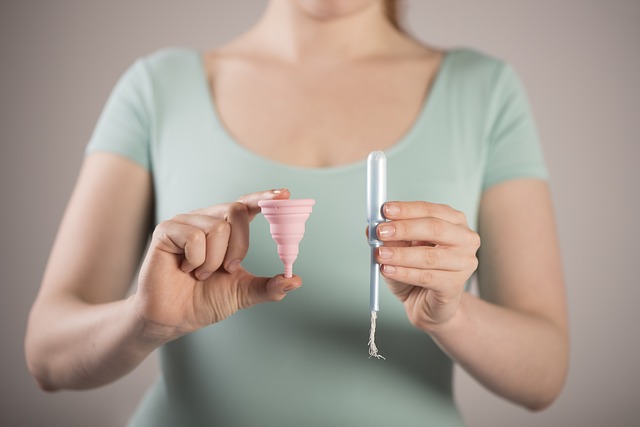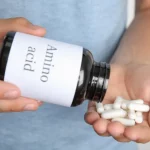
Image Source: Pixabay
Tampons have been around for decades, while menstrual cups are a bit more of a newcomer to the scene. Which one is right for you? I’ll help you figure that out, by looking at the following categories: environmental impact, cost, health impact, and convenience.
Tampons vs Menstrual Cups: Let’s get to it!
Tampons vs Menstrual Cup: Environmental Impact
Estimates vary, but it’s thought that the average person uses at least 10,000 tampons during a lifetime. This number will be significantly higher if you have a heavy, long, or irregular period.
Particularly harmful for the environment are the tampons that come with plastic applicators. Even the least wasteful option, the ones without applicators usually come wrapped in little bits of plastic. These things will still be hanging around our landfills in centuries from now.
Let’s take a look at menstrual cups. They are usually made from medical grade silicone and last for around five years. If the average person menstruates for 40 years, that’s eight menstrual cups over a lifetime.
8 menstrual cups vs 10,000+ tampons. It really does make a big difference for our Earth.
Menstrual cups for the win!
Tampons vs Menstrual Cup: Cost
Let’s talk about money. Everyone likes to have a bit more money in the bank at the end of the month, right?
Those 10,000 tampons end up costing more than $2000 USD. Then, throw in a few disposable pads, and pantyliners and you have a lot of money spent on period products.
Let’s take a look at menstrual cups. The top-quality ones (Mooncup, Diva Cup, Lunette Cup, Lena Cup, Evacup) cost $20-30. However, they’ll last for around five years and end up costing around $200 for your entire menstruating life.
Do the math and that ends up being more than 10x less expensive for the menstrual cups when compared to tampons. If you’re serious about saving some cash, then make the switch to a menstrual cup today.
Menstrual cups for the win in this category!
What about the Cheap Menstrual Cups?
If you take a look over on Amazon, you may notice that there are some very cheap menstrual cups that cost less than $10. If you’re looking to go frugal, you may be tempted by them. However, they don’t make a great choice for the following reasons:
- They’re often made from materials which aren’t medical grade. For a product that you put inside your body, it’s not really what you want.
- Cheap cups are often so flimsy that they don’t work that well.
- There is often little information about them, even basic stuff like size and capacity.
In the end, you’ll often end up switching back to tampons, or buying a higher quality menstrual cup so it’s best to just avoid this in the first place.
Learn more here: Everything You Need to Know about Cheap Menstrual Cups.
Tampons vs Menstrual Cup: Health Impact
The next thing to consider when deciding between tampons and menstrual cups is the health impact of each of these products.
Here’s something you may not know. It’s that tampons sometimes contain trace amounts of toxic chemicals in them. They mostly come from the pesticides used on the cotton, and the bleaching process during manufacturing.
The biggest part of the problem is that pads and tampons are classified as “medical devices” by the FDA. This means that manufacturers aren’t required to disclose what’s in these products. Hopefully, legislation will change at some point, or companies will just disclose this information willingly, but in the meantime? Consider a menstrual cup.
As long as you stick with a top-quality cup, you’ll have a toxin-free period experience.
What about Toxic Shock Syndrome?
Thousands of people get TSS each year from tampons. What about menstrual cups? To date, there is only one reported case of Toxic Shock Syndrome associated with one. Although you can, in theory, get TSS from a cup, the risk is very low, and seems to be lower than with tampons.
Menstrual cups for another win in this category!
Tampons vs Menstrual Cup: Convenience
The last category we’ll look at is convenience. Tampons are very easy to deal with—you just have to throw your used one in the trash, and put a new one in.
Menstrual cups do require a bit more work because you have to keep them clean in order to reduce your risk of infections and TSS. You should wash them with a mild soap or menstrual cup wash every time you take it out. Then, at the end of your period, you can boil it in a pot of water on the stove for five minutes to sterilize it.
Is it a big deal? Not really. Most people find that the benefits of menstrual cups far outweigh the minor hassle of having to clean it.
And on the upside, menstrual cups have a capacity 3-4x greater than even a jumbo tampon, and you can wear them for up to 12 hours. This means that if you have a heavy period, you’ll LOVE menstrual cups, especially at night. Try one out for yourself to see the difference.
Tampons and menstrual cups: they break even in this category!
Tampons vs Menstrual Cups: The Takeaway
Menstrual cups are kind of the best thing since sliced bread. They’re better for the environment and health, cheaper and also more convenient if you have a heavy period.
About The Author:
Jackie Bolen is a tree-hugging friend of the Earth who can usually be found on top of a mountain or drinking coffee around Vancouver, Canada. Her hope is that a reusable period product will one day be found in the hands of every single menstruating person in the world. You can find her on Facebook and Pinterest.




![3 Breathing Techniques Which Relieve Anxiety [And The Science Behind Them] Breathing Techniques Which Relieve Anxiety](https://www.safeandhealthylife.com/wp-content/uploads/2021/09/Breathing-Techniques-Which-Relieve-Anxiety-150x150.jpg)